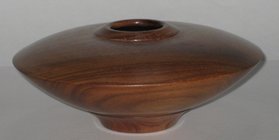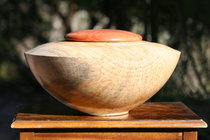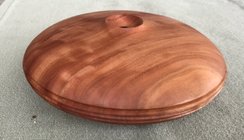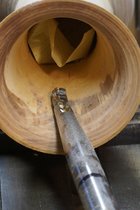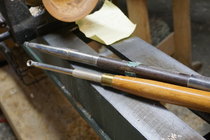Having never had a captured bar hollowing system I can't comment on any of them or how easy they would be compared to hand hollowing, which is what I have always done.
There were no captured systems available back when I began hollowing, well not where I am, so I just got used to doing it by hand. I rarely have a need to go much deeper than 12", beyond which a captured system may come into its own for me.
The other factor for me is that I only do half a dozen hollow pieces a year for which the cost of a rig is probably not justified, given that I'm getting by without one. Had I begun hollowing when rigs first became available I may have gone that way.
With hand hollowing I still do the bulk of the hollowing with a bowl gouge using a reverse cut. When you are turning outboard that is a comfortable cut to do. A 3/4" Woodcut bowl gouge has a long solid bar and will cut deeply within the form without vibration. I would then use a
Shepid Loop for cutting up under the shoulder. When the Pro-Forme came out I went over to those, as well as the Munro. Those tools cut much like a gouge.
I also use the
Pro-Scraper Head (
not the Pro-Forme
Flexi Scraper). The Pro-Scraper Head allows for internal shear scraping at whatever shear angle you want and I find it an invaluable finishing tool for inside work. The Pro-Scraper Head replaced my DIY fixed tip carbide scrapers that I used before that.
I don't find hollowing that way up to about 12" deep, like this one, overly difficult to achieve by hand...
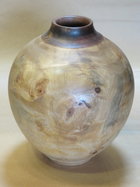
I do find that hollowing wider more of a challenge than hollowing deeper, like the following one that I'm currently working on, which is only 10" high, but about 18" wide...
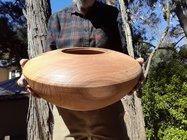
And, with some of my pieces, like the following two, turning out the inside shoulder is an extra challenge…
